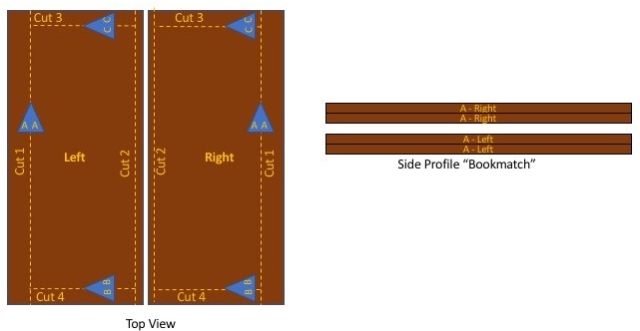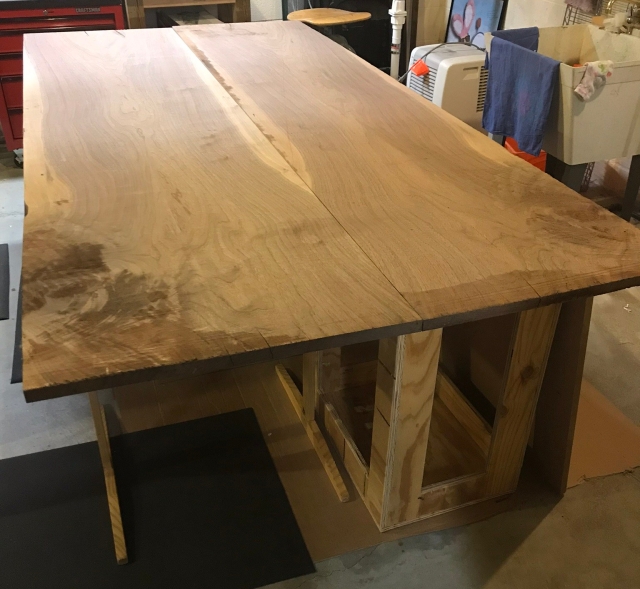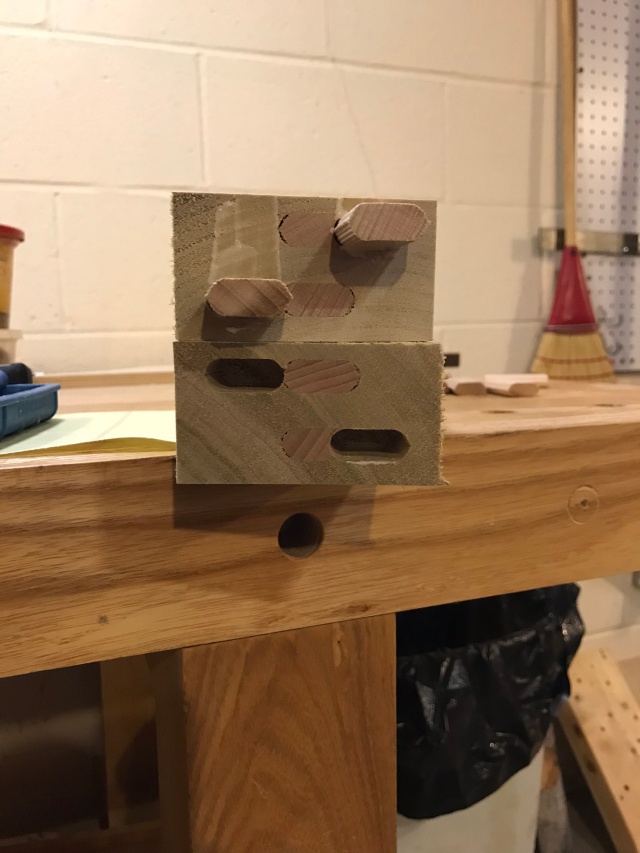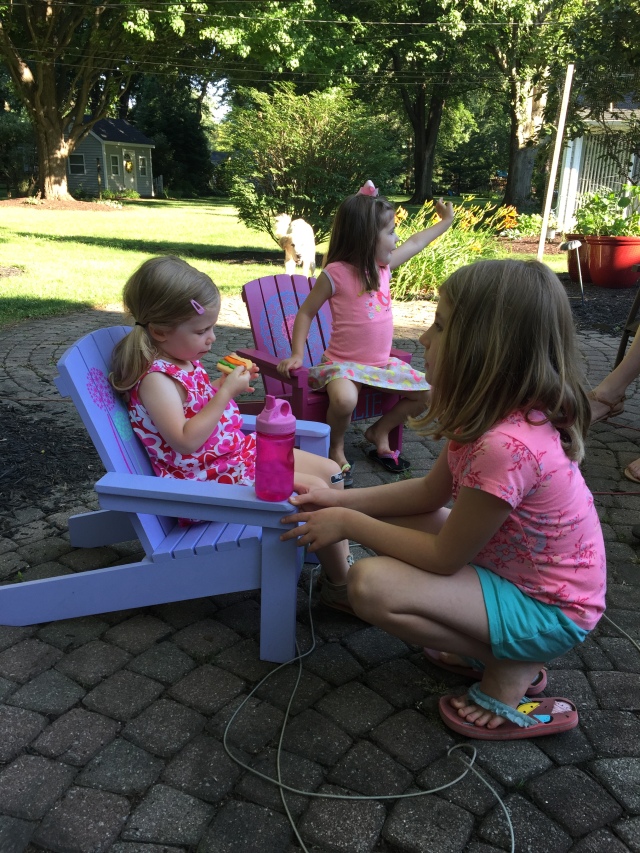With the decision to create breadboard ends made, the focus quickly turned to sourcing material. As I’ve lamented in the past, my part of Cleveland is a bit of a hardwood desert. I only needed one 6″ wide x 48″ long of 8/4 walnut but this meant either driving 45 minutes to pay Woodcraft prices or 120 minutes to get out into God’s country for better options. I couldn’t justify 4 – 5 hours round trip for one board. Therefore, I called Woodcraft, said a brief prayer to the God of Walnut Color Variation, and drove over with an off cut from the top. Oh, I grabbed some Vaseline too (it came in handy). I lucked out on the color and grain, forked over $100, and left with one six foot long board about 6″ wide. Sigh…
On the drive home I continued contemplating my method for creating the breadboard ends. Previously, I used my Festool Domino to make this joint. The method is a slightly modified version of what’s shown in this video. This joint has held up fine, but the long drive helped feed my neurosis and I didn’t want to chance this joint self destructing on a piece I will look at for years to come. Therefore, I broke out a few books on the topic and decided on the more traditional method. I finally settled on this Glenn Huey video I’d watched many, many times.
Although a staunch an anti-jigist, I dove into the scrap bin and created the router fence Glenn describes to use with a flush trim bit. Once it was locked down into location, it was pretty straightforward and messy.
The plan called for a slight offset using a spacer. You run the flush trim bit to get the full length 1/4″ tongue. Also, I used my best judgment on spacing of the tenons. In the end, I mostly eye-balled it since this will be buried for eternity.
With the tenons made, I moved onto the mortises. The first step is to plow the groove for the 1/4″ tongue. Although I complain about my hardwood desert status, one of the advantages to living in Cleveland is the proximity to Woodpeckers. More specifically, the key advantage is being good friends with one of the designers who invent and create their one-time tools, like this one.
With groove properly fit, I marked the location of the mortises. Note in the pictures that I over cut them in length to help with assembly.
Next I fine tuned the fit with a rabbeting block plane, rasps, and a bed float.
The last step was to drill holes for drawboring the joint together. You’ll see clamps in the images, which I used for extra insurance and because they were easy to apply due to my design.
You might ask yourself why drilled the holes from the underside of the table. The reason being I didn’t want them to show on the top because I originally planned for decorative butterfly keys on the top. I thought the pegs would fight with the nice keys I’d made. However, after posting the picture below to Instagram, and thinking things through, I opted to nix that idea. The clean look of the top didn’t need any more mucking up.
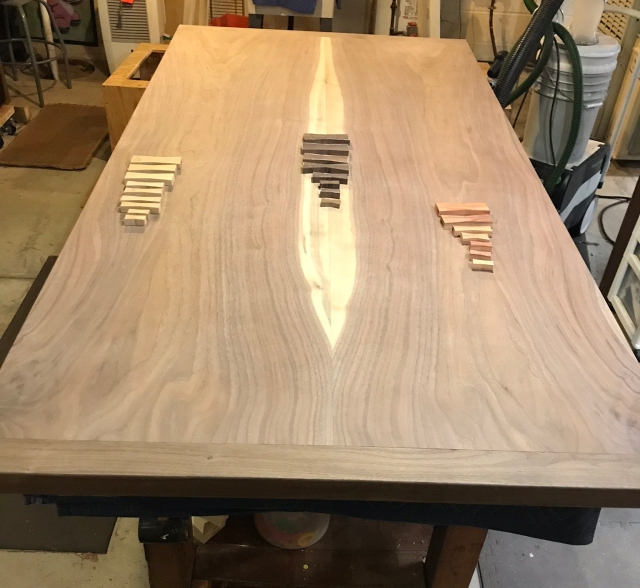
The only things left are applying the finish(s) and finalizing the mounting scheme. That’s for next time.






































